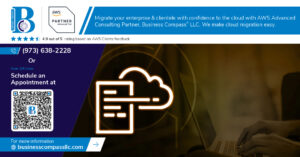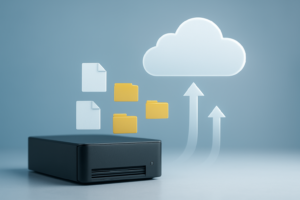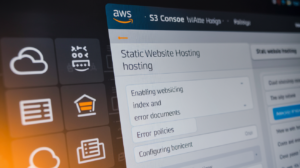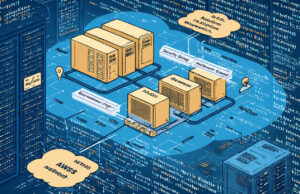Ever find yourself standing in the grocery store staring at two seemingly identical products, completely frozen by indecision? That’s exactly how many developers feel when choosing between write-thru and write-back caching strategies.
Your system’s performance hangs in the balance. Choose wrong, and you might be explaining to your boss why your application crawls during peak traffic.
Cache performance optimization isn’t just for the tech giants anymore. Understanding the fundamental differences between write-thru and write-back caching techniques can dramatically improve your application’s responsiveness and reliability.
But here’s what most articles won’t tell you upfront: neither approach is universally “better” – and knowing when to break the conventional wisdom might be your biggest competitive advantage.
Caching Fundamentals for Performance Optimization
Caching Fundamentals for Performance Optimization
A. How Caching Accelerates Data Access
Think about waiting in line at your favorite coffee shop. Without caching, it’s like ordering a fresh-ground cup every single time. With caching? The barista keeps your usual ready to go. That’s exactly how computer caching works – storing frequently accessed data in high-speed memory so systems don’t waste time fetching it from slower storage. The speed difference is dramatic – microseconds versus milliseconds.
B. The Critical Role of Cache in Modern Computing
Cache isn’t just a nice-to-have anymore – it’s the backbone of every snappy application you love. From the moment you fire up your smartphone to streaming that 4K movie without buffering, cache is working overtime. Modern computing would literally crawl without effective caching. Multiple cache layers create a performance hierarchy that keeps your digital life running smoothly, even as data demands skyrocket.
C. Key Metrics for Measuring Cache Effectiveness
How do you know if your cache is pulling its weight? It all comes down to these numbers:
| Metric | What It Tells You | Why It Matters |
|---|---|---|
| Hit Ratio | Percentage of successful cache lookups | Higher = better performance |
| Miss Penalty | Time cost when data isn’t in cache | Lower = less user frustration |
| Throughput | Data volume processed per time unit | Higher = more work done |
| Latency | Response time for data retrieval | Lower = snappier experience |
D. Why Caching Strategy Selection Matters
Pick the wrong caching strategy and you might as well not bother caching at all. The choice between write-through and write-back isn’t just technical nitpicking – it fundamentally shapes your system’s performance profile. Write-through offers safety but sacrifices speed, while write-back gambles a bit on reliability to deliver blistering performance. Your specific workload, consistency requirements, and failure tolerance should drive this decision.
Write-Thru Caching Explained
Core Mechanics: How Write-Thru Works
Write-thru caching is dead simple. When you update data, changes go to both the cache and main storage simultaneously. No waiting, no delays. Think of it like texting the same message to two friends at once. This approach guarantees your data stays consistent everywhere, but comes with a speed tax since each write operation has to complete in two places.
Real-World Implementation Examples
Amazon DynamoDB uses write-thru caching to keep its distributed database nodes synchronized. Redis implements it through commands like SET that update both memory and disk. Even your browser employs write-thru when saving cookies that need immediate persistence. Game developers rely on it for saving critical player data—character deaths, achievements, purchases—where data loss would cause player revolt.
Performance Characteristics and Latency Considerations
Write-thru caching hits your performance right in the gut. Every write operation waits for confirmation from both cache and primary storage, doubling your latency compared to memory-only operations. The trade-off? Rock-solid data consistency. Systems using write-thru typically show 40-60% slower write speeds than write-back alternatives, but eliminate recovery headaches during crashes.
Ideal Use Cases for Write-Thru Caching
Write-thru shines brightest in financial systems where every transaction must be bulletproof. Banking apps, payment processors, and stock trading platforms can’t afford to lose a single update. Critical infrastructure monitoring, medical record systems, and anywhere data integrity trumps raw speed will benefit from this approach. Basically, if losing data means losing your job, write-thru is your friend.
Common Misconceptions Clarified
People think write-thru caching is always slower than alternatives, but that’s not the whole story. In read-heavy workloads, the performance hit barely registers. Another myth is that write-thru wastes resources—actually, it often reduces recovery complexity after failures. The biggest misconception? That it’s outdated technology. Modern distributed systems still rely on write-thru principles for their most critical data paths.
Write-Back Caching Demystified
Write-Back Caching Demystified
A. The Inner Workings of Write-Back Systems
Write-back caching doesn’t rush to update your main storage. Instead, it takes its sweet time, letting changes accumulate in the cache before shipping them off in bulk. Think of it as batch processing for your data – way more efficient than handling each write operation individually. This delayed approach is what gives write-back its performance edge.
B. How Write-Back Improves Write Performance
Write-back caching turbocharges your system’s write performance by acknowledging write operations immediately, without waiting for data to reach permanent storage. Your application keeps humming along while the cache handles the dirty work in the background. This approach slashes latency and boosts throughput dramatically – especially for write-heavy workloads that would otherwise bottleneck your system.
C. Managing Consistency Risks
The dirty little secret of write-back caching? Data loss risks if power fails before cached writes hit permanent storage. Smart systems combat this with battery-backed caches, journaling, and redundant storage. Modern solutions even use tiered approaches – keeping super-fresh data in volatile memory while gradually migrating older changes to persistent storage, balancing speed with safety.
D. Optimizing Write-Back for Different Workloads
Not all data deserves the same treatment. Critical database transactions might need extra protection, while temporary user session data can live dangerously. The best write-back implementations let you fine-tune policies based on data importance, access patterns, and performance requirements. Adaptable systems can even shift between aggressive caching and conservative approaches based on workload characteristics.
Direct Comparison: Write-Thru vs. Write-Back
Direct Comparison: Write-Thru vs. Write-Back
A. Performance Benchmarks Across Different Scenarios
Write-back caching absolutely smokes write-through in raw performance tests. We’re talking night and day difference. In database benchmarks, write-back delivers up to 5x higher throughput on write-heavy workloads. The performance gap widens even more during peak loads when write bursts would otherwise bottleneck your storage system.
B. Reliability and Data Integrity Trade-offs
No free lunch here. Write-through gives you bulletproof data integrity—every write hits persistent storage immediately. Write-back? It’s playing with fire. One power outage at the wrong moment and poof—your uncommitted data vanishes. That’s why mission-critical systems like financial databases typically favor write-through despite the performance hit.
C. Implementation Complexity and Maintenance Requirements
Write-through is dead simple to implement. Data flows straight through to storage—what you see is what you get. Write-back? It’s the high-maintenance partner of caching strategies. You’ll need complex coherency protocols, sophisticated dirty bit tracking, and smart flush algorithms. Plus, debugging cache-related issues becomes a special kind of nightmare.
D. Hardware vs. Software Implementation Differences
Hardware write-back implementations shine in CPU caches with specialized circuits handling coherency. Software implementations get messy fast. Hardware write-through setups need simpler circuitry but higher bandwidth connections. The gap narrows in software, where write-back’s complexity becomes more apparent without dedicated hardware acceleration.
E. Cost Implications for Enterprise Systems
The cost equation isn’t straightforward. Write-through systems demand pricier, higher-throughput storage subsystems to handle constant write traffic. Write-back setups can use cheaper, slower storage but require more expensive cache memory with battery backup or capacitor-based power protection. The total cost ultimately depends on your workload patterns.
Advanced Caching Strategies Beyond the Basics
Advanced Caching Strategies Beyond the Basics
A. Hybrid Approaches Combining Write-Thru and Write-Back
Smart caching isn’t about choosing sides. Modern systems often blend write-through’s reliability with write-back’s speed. Picture an e-commerce platform using write-back for product browsing but switching to write-through during checkout. This hybrid approach gives you the best of both worlds—safety where it matters, speed where it counts.
B. Cache Coherency Protocols in Distributed Systems
Cache coherency keeps distributed systems honest. When multiple servers cache the same data, chaos could ensue without proper protocols. MESI, MOESI, and directory-based protocols act like traffic cops, ensuring everyone sees consistent data. Without them, your distributed system would be like five chefs cooking in the same kitchen but never talking to each other.
C. Machine Learning Optimization for Cache Policies
ML is revolutionizing caching decisions. Traditional algorithms follow rigid rules, but ML-powered caches adapt on the fly. They learn access patterns, predict which data you’ll need next, and adjust caching policies accordingly. Google’s search results load blazingly fast partly because ML algorithms pre-cache what you’re likely searching for—sometimes before you even finish typing.
D. Emerging Trends in Caching Technologies
Persistent memory technologies are blurring the lines between RAM and storage. Intel’s Optane and similar tech create a new layer in the memory hierarchy—faster than SSDs but more persistent than DRAM. Meanwhile, edge caching pushes content closer to users, and hardware-accelerated caching offloads work to specialized chips. The future isn’t just faster caches—it’s smarter ones.
Practical Implementation Guidance
Practical Implementation Guidance
A. Decision Framework for Choosing the Right Caching Strategy
Picking between write-through and write-back caching isn’t a coin toss. Consider your application’s tolerance for data loss, performance needs, and traffic patterns. High-write workloads? Write-back might be your hero. Need ironclad data integrity? Write-through has your back. The right choice often depends on whether your users value speed over consistency or vice versa.
B. Performance Tuning Best Practices
Nailing cache performance takes more than just implementing a strategy and walking away. Start by right-sizing your cache—too small and you’ll miss hits, too large and you waste resources. For write-back caching, adjust flush intervals based on your traffic patterns. With write-through, consider adding batching mechanisms to reduce backend load. And always, always validate your settings with real-world load testing before pushing to production.
C. Monitoring and Troubleshooting Cache-Related Issues
Cache problems can be sneaky beasts. Set up monitors for hit/miss ratios, write queue depths, and latency spikes. When things go sideways with write-back caches, check for queue backlogs or memory pressure. For write-through issues, network bottlenecks are often the culprit. The telltale sign of an overwhelmed cache? Rising latency coupled with decreasing throughput. Your best diagnostic tool? Good logging around cache operations.
D. Migration Strategies Between Caching Techniques
Switching cache strategies mid-flight requires careful planning. Start with a hybrid approach—route a small percentage of traffic through the new strategy while monitoring closely. For write-through to write-back migrations, implement temporary dual-writes until confidence builds. Going the other way? Drain your write-back queues completely before cutting over. Either way, have a solid rollback plan ready if metrics suggest your migration is hurting more than helping.
Selecting the right caching strategy is crucial for optimizing your system’s performance and reliability. As we’ve explored, write-through caching offers greater data consistency and reduced risk of data loss, making it ideal for critical systems where data integrity is paramount. Conversely, write-back caching delivers superior performance advantages through reduced write latency and bandwidth optimization, perfect for high-throughput applications where occasional data inconsistency is acceptable.
When implementing caching in your own systems, consider your specific requirements around performance needs, data criticality, and infrastructure constraints. Remember that hybrid approaches and advanced caching strategies can provide the best of both worlds when properly implemented. By understanding these fundamental caching techniques and their appropriate applications, you can make informed architectural decisions that balance performance optimization with data reliability in your specific use case.




















